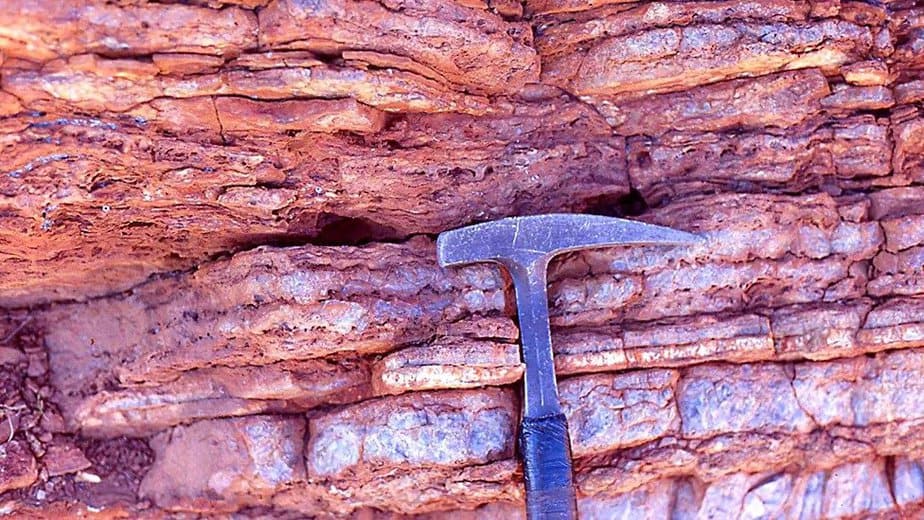Rocks in the Australian Outback dating back 3.5 billion years may help scientists work out whether there has ever been life on Mars.
Researchers studying the Australian rocks say only ancient microbes could have shaped them the way they are.
Nasa’s Perseverance rover should look for similarities when exploring rocks of a similar age on Mars, they say.
The wheeled robot is searching for evidence that biology took hold on the Red Planet early in its history.
Scientists from London’s Natural History Museum working with Nasa have described a range of features, both large and small, in a series of domes in western Australia that appear inarguably to have been made by ancient microbes.
Perseverance is exploring a large crater called Jezero and is expected to come across locations next year that may well display phenomena tantalisingly similar to what is seen in the Earth rocks.
The researchers used a range of high-resolution analytical and imaging techniques to detail structures whose existence, they argue, can only really be explained by life’s activity, as opposed to something that might result naturally in the environment.
One large-scale feature is the undulating top surface of the stromatolites, which arises as photosynthetic microbes grow towards the light. The undulations emerge because biology doesn’t grow at the same rate in the same way in three dimensions.
On the micro-scale, there are tiny columns or pillars within the rock that trace the connections between the individual “mats” of microbes that build the stromatolites.
“These are strongly, strongly representative of a kind of microbial growth texture, which we call palisade structures,” Dr Hickman-Lewis explained.
“We know palisade structures abundantly from environments on the modern Earth; we can see examples that are of a similar size and of a similar arrangement. And these occur very much in these domed growth layers,” he told BBC News.
The relevance here to Mars and the Perseverance rover is that Jezero Crater looks from satellite imagery to have held a large lake deep in its past. And at the edge of the crater are carbonate rocks that could represent the sediments laid down at the shoreline.
Might Jezero have had microbes growing stromatolites in the crater’s calm, nutrient-rich, shallow waters?
The timeline would not be dissimilar to Earth, just a little earlier. Scientists think the lake existed about 3.7 billion years ago.
Perseverance will probably get to the crater edge towards the end of next year. At that point, it will be deploying its instruments to try to locate rocks that share some of the characteristics seen in the Pilbara stromatolites.
Prof Caroline Smith is head of the Earth science collections at the NHM and, like Dr Hickman-Lewis, is working on the rover mission.
She said they would be using what they’ve learnt from Australia to steer some of the rover’s investigations, looking for those tell-tale biological signatures.
“We could identify some of them using the imaging systems on the rover, but it will depend – first, obviously, on whether stromatolites were even there, and then how well preserved they might be.
“Are they preserved more on a macro or micro scale? Are they ubiquitous, or maybe they are going to be limited in a smaller area. So if we’re looking in the wrong place, then we won’t necessarily see them,” she cautioned.
A slam dunk identification of ancient biology in Jezero Crater is a very long shot. More likely would be the discovery of rock samples that represent excellent candidates for further study back on Earth.
This is the primary objective of Perseverance – to drill and store samples that can be collected by later missions and brought home for analysis.
Proving life existed will be difficult, but Dr Hickman-Lewis believes his team’s study has developed a template to do it: “If an archaeologist discovered the foundations of a ruined city, they would nonetheless know it was built by people because it would bear all the hallmarks of being built by people – doorways and roads and bricks.
In very much the same way, there are numerous structural elements integral to stromatolites that allow us to identify their processes of formation and decode their origins.”








